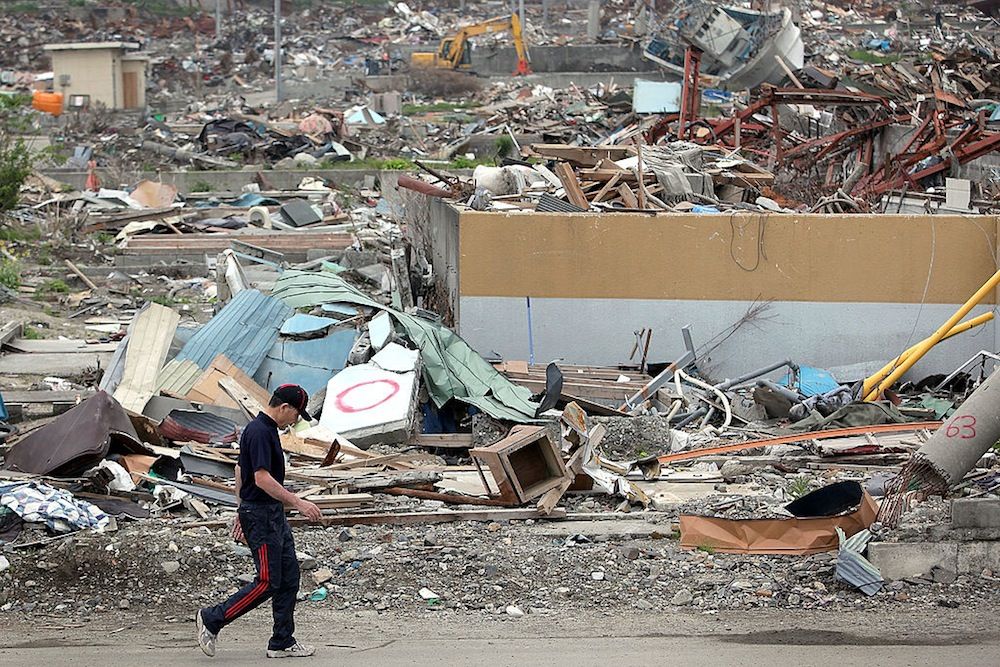Why Do So Many Big Earthquakes Strike Japan?

A magnitude-6.9 earthquake struck yesterday off the coast of Fukushima, Japan, likely along the same fault that ruptured in 2011, unleashing a massive 9.0-magnitude temblor that triggered deadly tsunamis and caused widespread destruction. Over the course of its history, Japan has seen its share of shaking, but what makes this part of the world so susceptible to big earthquakes?
The answer has to do with Japan's location. The island nation lies along the so-called Pacific Ring of Fire, an imaginary horseshoe-shaped zone that follows the rim of the Pacific Ocean, where many of the world's earthquakes and volcanic eruptions occur. In fact, 81 percent of the world's largest earthquakes happen in this active belt, according to the U.S. Geological Survey (USGS). [Image Gallery: This Millennium's Destructive Earthquakes]
"The Earth's surface is broken up into about a dozen or so major chunks that are all moving around. Where they all interact at their edges, interesting things happen," Douglas Given, a geophysicist with the USGS in Pasadena, California, previously told Live Science.
Within the Pacific Ring of Fire, several tectonic plates mash and collide. In what are known as subduction zones, one plate bends and slides underneath the other, causing the oceanic crust to sink into the Earth's mantle.
"From Alaska down to Japan and the Philippines, all the way down around the western Pacific — and then the boundary of the west coast of South America and central America — are all big subduction zones," said Robert Smith, an emeritus professor of geophysics at the University of Utah.
Japan itself sits atop a complex mosaic of tectonic plates that grind together and trigger deadly earthquakes and volcanic eruptions, Smith told Live Science.
Yesterday's earthquake off the coast of Fukushima was centered about 80 miles (130 kilometers) southwest of the epicenter of the 9.0-magnitude Tohoku quake that struck in March 2011. This means the magnitude-6.9 temblor could be an aftershock of the more-powerful 2011 quake, according to seismologists.
Sign up for the Live Science daily newsletter now
Get the world’s most fascinating discoveries delivered straight to your inbox.
"There's been a whole sequence [of aftershocks] since the 2011 earthquake," Smith said. "These enormously big earthquakes have aftershocks that can continue for tens to hundreds of years. It's very common."
The 2011 earthquake released hundreds of years of pent-up stress within the subduction zone and triggered an enormous tsunami that inundated the coastal Fukushima Daiichi Nuclear Power Plant, eventually causing a level 7 nuclear meltdown. While yesterday's quake was not as powerful as the Tohoku temblor, the entire region is still at risk of big earthquakes.
The Tohoku quake "was one of the biggest earthquakes we've recorded historically, but the fact is, the seismic hazard of the whole subduction zone is extremely high, so large earthquakes are more common there than other places," Smith said.
Earlier this year, in April, a magnitude-7.0 earthquake struck the Kumamoto region in southern Japan, two days after a 6.2-magnitude temblor shook the same area.
Original article on Live Science.

Denise Chow was the assistant managing editor at Live Science before moving to NBC News as a science reporter, where she focuses on general science and climate change. Before joining the Live Science team in 2013, she spent two years as a staff writer for Space.com, writing about rocket launches and covering NASA's final three space shuttle missions. A Canadian transplant, Denise has a bachelor's degree from the University of Toronto, and a master's degree in journalism from New York University.












